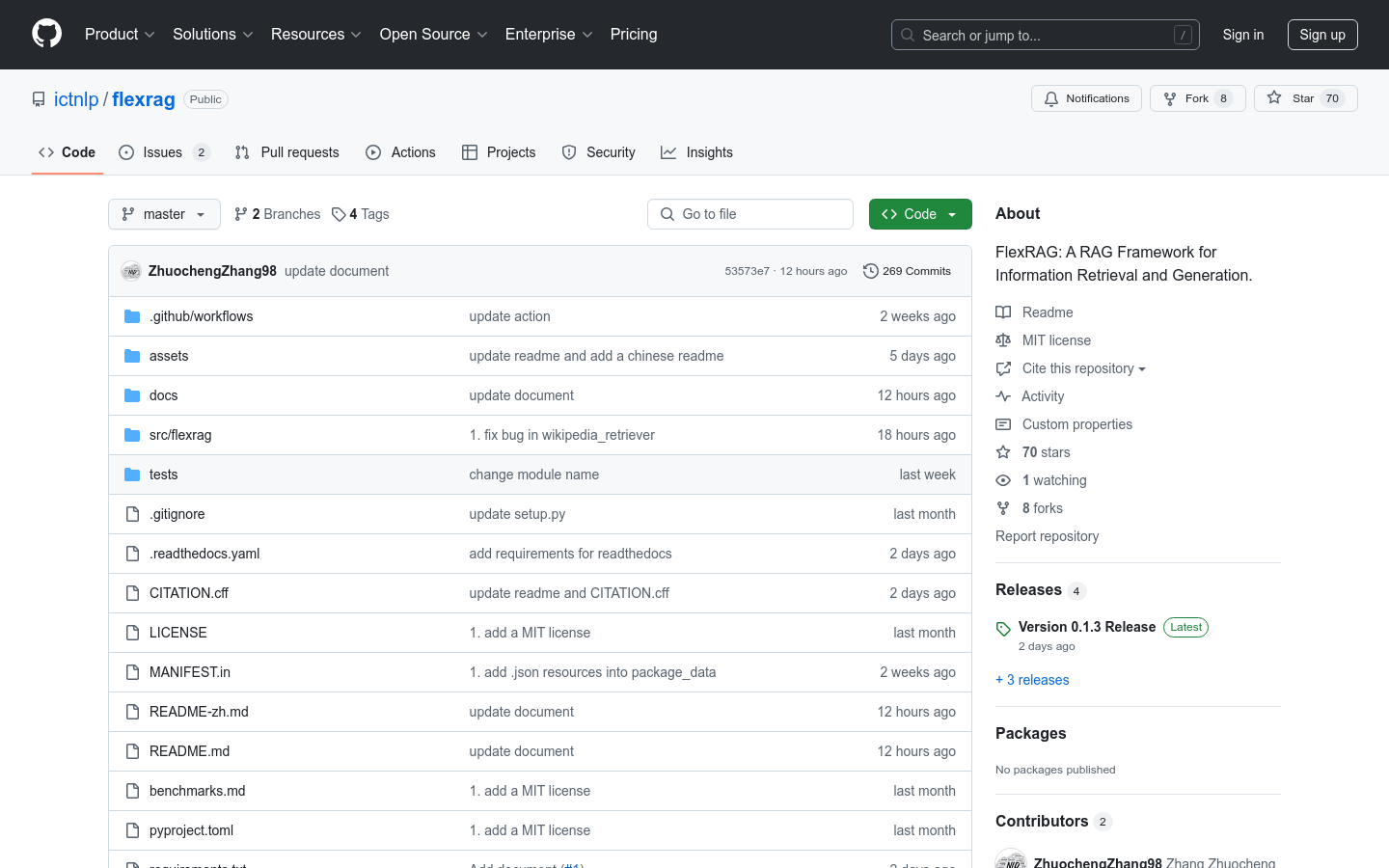

Flexrag
Overview :
FlexRAG is a flexible and high-performance framework for Retrieval-Augmented Generation (RAG) tasks. It supports multimodal data, seamless configuration management, and out-of-the-box performance, making it suitable for research and prototyping. Written in Python, it combines lightweight design with high performance, significantly improving the speed of RAG workflows and reducing latency. Key advantages include support for multiple data types, unified configuration management, and ease of integration and extension.
Target Users :
FlexRAG is designed for researchers and developers who need to perform complex information retrieval and generation tasks, particularly those working in the fields of natural language processing and machine learning. Its flexibility and high performance make it an ideal choice for developing efficient RAG applications.
Use Cases
Used in natural language processing research to develop more accurate question-answering systems
Serves as an intelligent retrieval tool for internal knowledge bases within enterprises
Used to develop personalized recommendation systems that generate recommendations based on user historical data
Features
Supports multimodal RAG, not limited to text
Integrates various data formats, such as text, images, documents, etc.
Simplifies configuration management using Python dataclasses and Hydra
Provides optimized default configurations, eliminating the need for complex parameter adjustments
Employs a persistent caching system and asynchronous methods to enhance performance
Supports various development modes, facilitating research and development
Lightweight design, easy to integrate into projects
How to Use
1. Install FlexRAG: It can be installed via pip or from source code.
2. Set up the retriever: Download the necessary datasets and build the index.
3. Run the FlexRAG assistant: Use the command line to run the RAG assistant provided by FlexRAG.
4. Customize the RAG assistant: Create your own RAG assistant class and register it in the FlexRAG framework.
5. Build your RAG application: Use FlexRAG's modules and configurations to construct your own RAG application.
Featured AI Tools

Pseudoeditor
PseudoEditor is a free online pseudocode editor. It features syntax highlighting and auto-completion, making it easier for you to write pseudocode. You can also use our pseudocode compiler feature to test your code. No download is required, start using it immediately.
Development & Tools
3.8M

Coze
Coze is a next-generation AI chatbot building platform that enables the rapid creation, debugging, and optimization of AI chatbot applications. Users can quickly build bots without writing code and deploy them across multiple platforms. Coze also offers a rich set of plugins that can extend the capabilities of bots, allowing them to interact with data, turn ideas into bot skills, equip bots with long-term memory, and enable bots to initiate conversations.
Development & Tools
3.8M

















